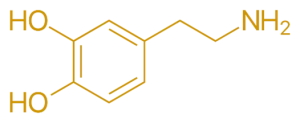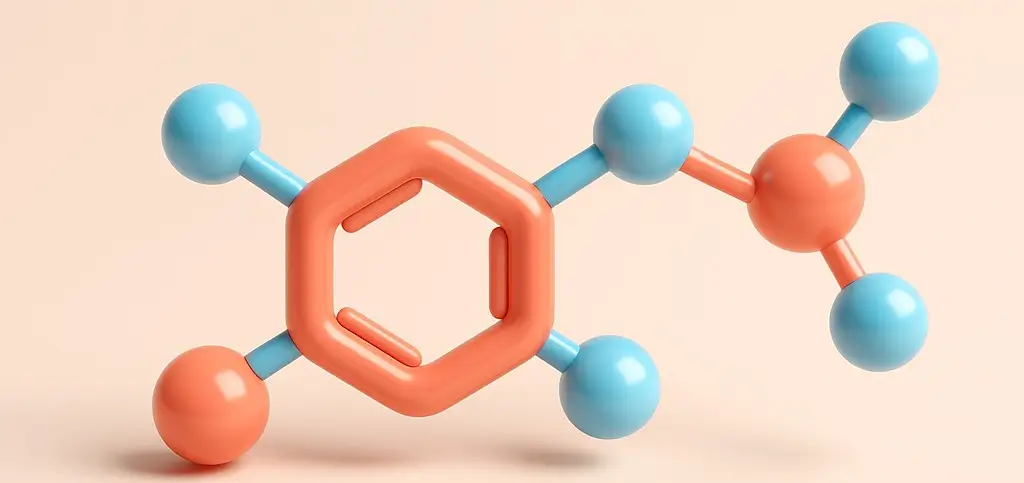- Dopamine helps transmit signals between nerve cells and is involved in how we feel pleasure. It’s often called the “feel-good” chemical, especially in the context of reward-driven behavior.

Synthesis of Dopamine:
-
Step 1: Conversion to L-DOPA:
- Enzyme: Tyrosine hydroxylase.
- Process: Tyrosine is hydroxylated to form L-dihydroxyphenylalanine (L-DOPA).
- Cofactors Required: Tetrahydrobiopterin (BH4) and oxygen.
- Mechanism: BH4 acts as a cofactor, and oxygen adds a hydroxyl group to the benzene ring of tyrosine, forming L-DOPA.
-
Step 2: Conversion to Dopamine:
- Enzyme: Aromatic L-amino acid decarboxylase.
- Process: L-DOPA is decarboxylated to form dopamine.
- Cofactor Required: Pyridoxal phosphate (vitamin B6).
- Mechanism: The enzyme removes a carboxyl group from L-DOPA, resulting in the formation of dopamine.
Significance of Dopamine:
- Movement Regulation: It is crucial for the coordination of voluntary movements.
- Motivation and Reward: It plays a key role in the brain’s reward system, influencing motivation, pleasure, and reinforcement learning.
- Basal Ganglia Function: It is essential for the proper functioning of the basal ganglia, a brain region involved in movement control.
Clinical Relevance:
- Parkinson’s Disease: Characterized by low levels in the brain, leading to movement disorders.
- Schizophrenia: Linked to dysregulation of pathways.
- Addiction: It pathways are involved in the mechanisms of addiction and reinforcement of addictive behaviors.
Click Here to Watch the Best Pharma Videos

